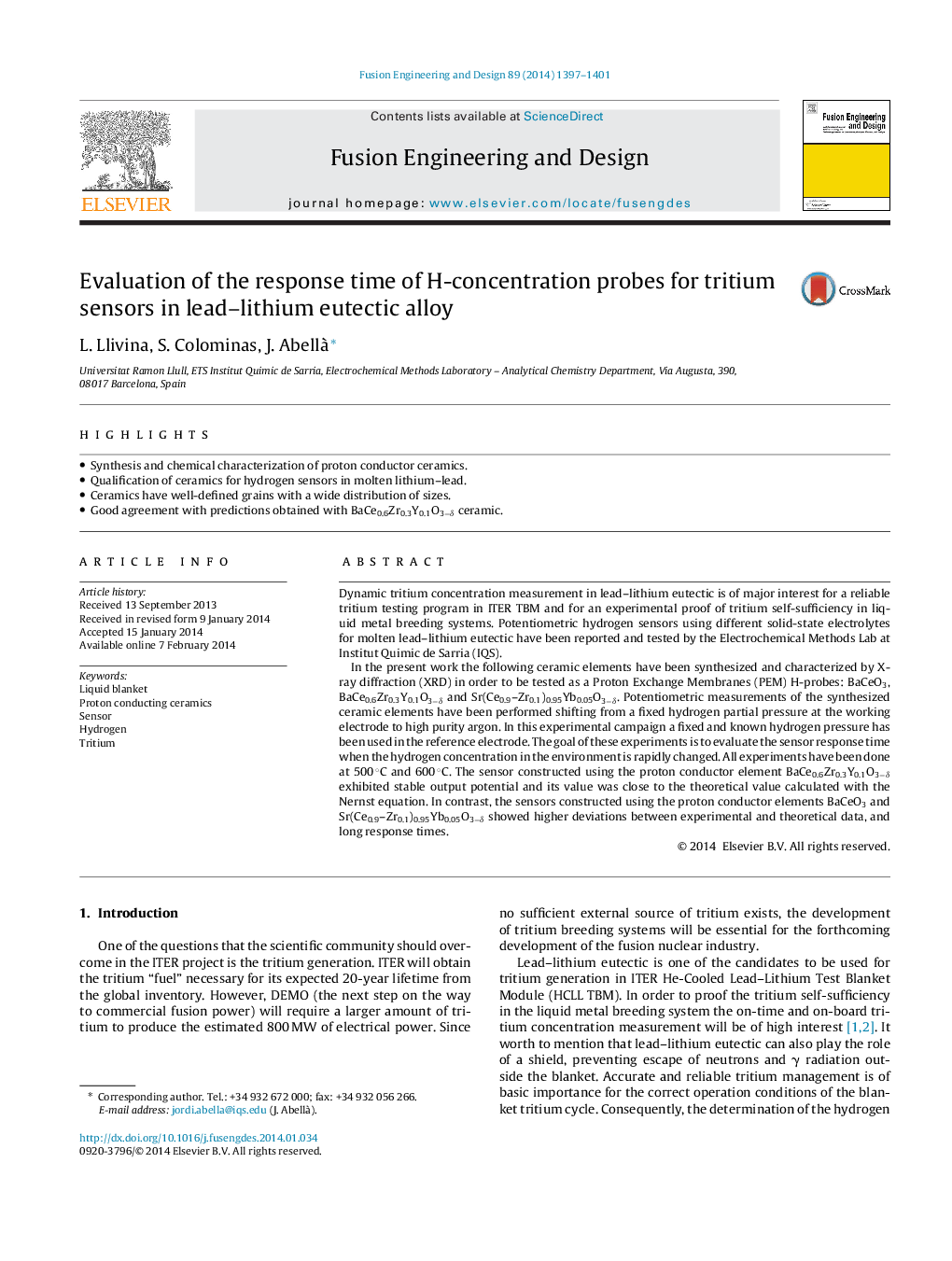| کد مقاله | کد نشریه | سال انتشار | مقاله انگلیسی | نسخه تمام متن |
|---|---|---|---|---|
| 271241 | 504990 | 2014 | 5 صفحه PDF | دانلود رایگان |

• Synthesis and chemical characterization of proton conductor ceramics.
• Qualification of ceramics for hydrogen sensors in molten lithium–lead.
• Ceramics have well-defined grains with a wide distribution of sizes.
• Good agreement with predictions obtained with BaCe0.6Zr0.3Y0.1O3−δ ceramic.
Dynamic tritium concentration measurement in lead–lithium eutectic is of major interest for a reliable tritium testing program in ITER TBM and for an experimental proof of tritium self-sufficiency in liquid metal breeding systems. Potentiometric hydrogen sensors using different solid-state electrolytes for molten lead–lithium eutectic have been reported and tested by the Electrochemical Methods Lab at Institut Quimic de Sarria (IQS).In the present work the following ceramic elements have been synthesized and characterized by X-ray diffraction (XRD) in order to be tested as a Proton Exchange Membranes (PEM) H-probes: BaCeO3, BaCe0.6Zr0.3Y0.1O3−δ and Sr(Ce0.9–Zr0.1)0.95Yb0.05O3−δ. Potentiometric measurements of the synthesized ceramic elements have been performed shifting from a fixed hydrogen partial pressure at the working electrode to high purity argon. In this experimental campaign a fixed and known hydrogen pressure has been used in the reference electrode. The goal of these experiments is to evaluate the sensor response time when the hydrogen concentration in the environment is rapidly changed. All experiments have been done at 500 °C and 600 °C. The sensor constructed using the proton conductor element BaCe0.6Zr0.3Y0.1O3−δ exhibited stable output potential and its value was close to the theoretical value calculated with the Nernst equation. In contrast, the sensors constructed using the proton conductor elements BaCeO3 and Sr(Ce0.9–Zr0.1)0.95Yb0.05O3−δ showed higher deviations between experimental and theoretical data, and long response times.
Journal: Fusion Engineering and Design - Volume 89, Issues 7–8, October 2014, Pages 1397–1401